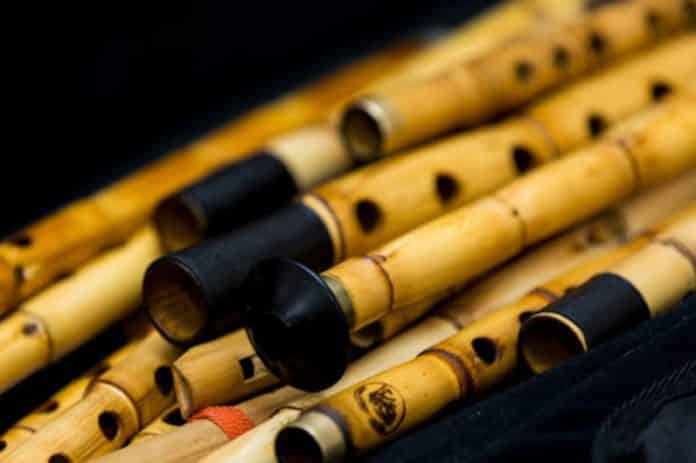
At first glance, the Ney looks like a simple long flute made by carving out a bamboo stick or metal or plastic.
But there is more to this instrumental piece of history and music. So, what exactly is a Ney?
The Ney is an end-blown flute and one of the oldest musical instruments in existence. Being end-blown means that it has a sharp-edged upper end against which air is directed into the flute. In the past, the ney was a keyed instrument made from cane or reed. Those had to be carved and hollowed out to create five or six finger holes and a thumb hole.
Nowadays, you might find neys made entirely of metal and even a PVC pipe. However good they sound though, the best Ney music still comes from natural cane.
Pronounced “nai,” “nye,” or “nay,” it was the only wind instrument used in Middle Eastern music 4,500 years ago. Since then, the Ney has been embraced by Turks, Arabs, Persians, Romanians, and Egyptians. This widespread adoption birthed different types of neys, each with distinct features unique to different cultures.
Types Of Neys Based On Culture
Arabic And Turkish Ney
The Arab nai and the Turkish ney, both essentially the same instrument, are played using the pads of the fingers and not the fingertips. These Neys also come in different lengths and are tuned to a specific pitch, so players can only play the same tunes transposed to different keys.
By the Arabic and Turkish standards, the ney has 7 holes, and each has a whole tone interval capacity. The thumbhole allows a player to play 4 notes, and when all the holes are closed, the Ney renders a C. The instrument is pitched by the name of the note made with the first fingerhole, which is D per the Arabic name.
The first hole open produces a D for the first register and the lowest octave, then Eb, E1/2b, F, F#, G – differing by an octave, respectively.
For the 2nd register, sound A is overblown by a fifth, followed by Bb, B 1/2b, C, C#, and so on. In the 3rd register, the sound is an octave above the 1st register and produces C and D.
Other notes are produced by partially reopening a tone hole, altering the blowing angle, or combining the two. It’s also worth noting that the G note in the first register has the same pitch as the all-holes-closed note in the second, as does the C in the second register and the closed C in the third. These alternate fingerings are utilized for musical purposes and to check internal tuning.
Persian Ney rm67y
A Persian ney typically has six holes, one of which is on the back. The Pamiri nay is made of wood or, in Eastern Badakhshan, eagle bone. Despite the name’s resemblance to the Arabic end-blown nay, this side-blown flute may be more closely connected to Chinese flutes like the dizi, maybe through a Mongol connection.
How To Play The Ney
Like most other flute-like instruments, you put your mouth to one end of the ney and blow into the tube in a somewhat oblique direction. As the air passes through the flute, it bounces from one side to the other. With your fingers covering and opening certain holes on the flute, the ney thus makes different notes and sounds.
It’s important to note that mouth placement is slightly different when playing the ney. A ney player, called neyzen, uses a special inter-dental method to play. They put the mouth-end of the ney between their teeth and upper jaw and then direct the air with their tongue.









Nice